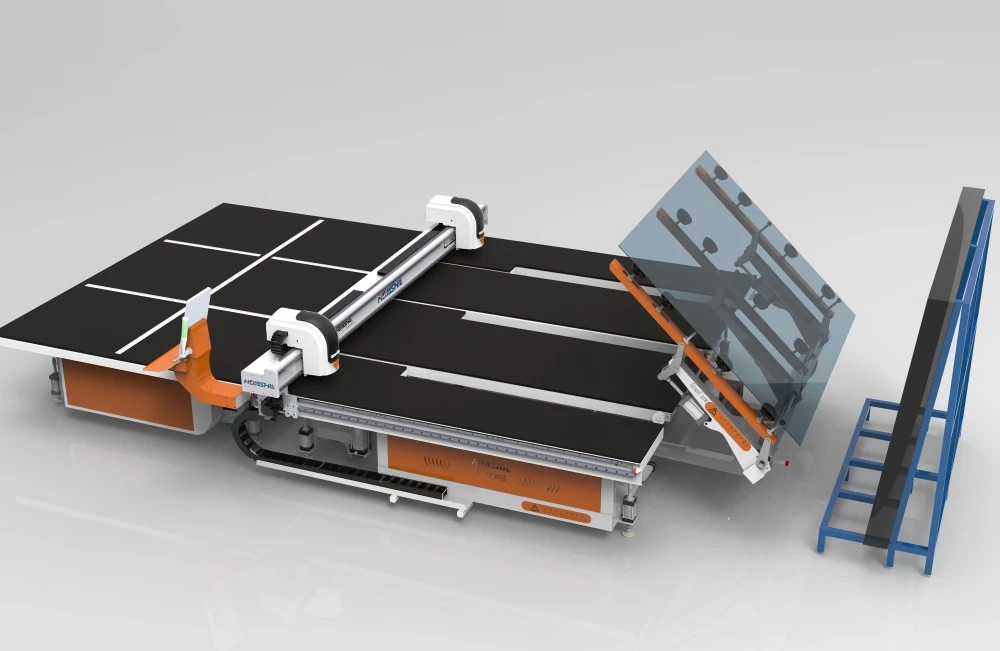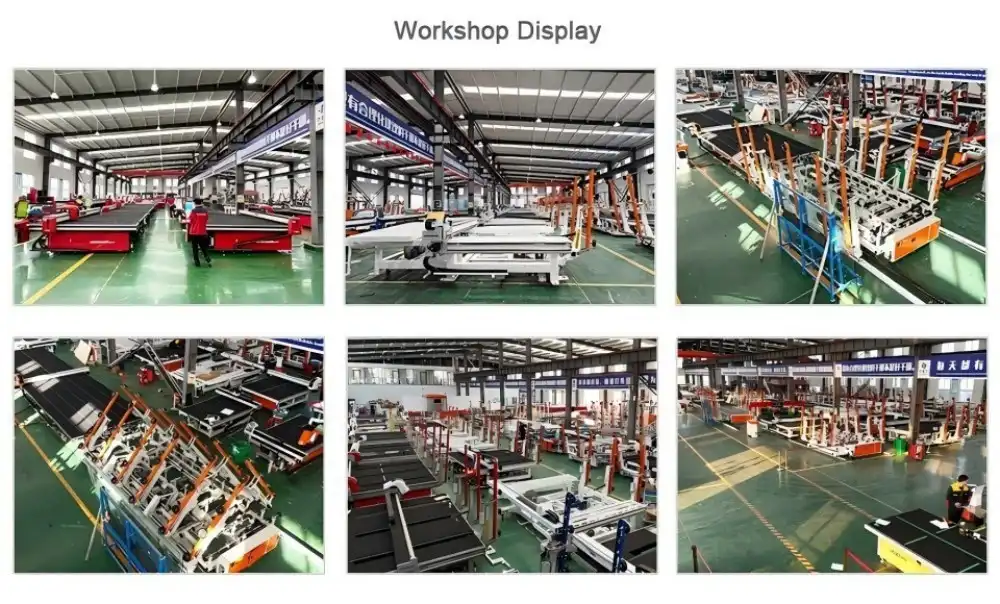Mobile glass cutting machines have revolutionized the glass industry, offering unprecedented flexibility and efficiency. However, to ensure these cutting-edge tools maintain their precision and reliability, proper maintenance is crucial. This comprehensive guide will explore the essential maintenance procedures for mobile glass cutting machines, helping you maximize their lifespan and performance.
Daily cleaning procedures for mobile cutters
Keeping your mobile glass cutter in pristine condition is paramount for optimal performance. A diligent daily cleaning routine can prevent the accumulation of glass particles and debris, which can impair cutting accuracy and potentially damage the machine.
Start by powering down the machine and unplugging it from any power source. Using a soft-bristled brush, gently sweep away any visible glass shards or dust from the cutting surface and surrounding areas. Pay special attention to the cutting wheel and guide rails, as these components are particularly susceptible to debris buildup.
Next, use a microfiber cloth slightly dampened with a manufacturer-approved cleaning solution to wipe down the entire machine. This step helps remove any stubborn residue and prevents corrosion. Be sure to dry all surfaces thoroughly to avoid moisture-related issues.
For the cutting wheel itself, use a specialized cleaning tool or a fine-bristled brush to remove any embedded glass particles. This step is crucial for maintaining the wheel's sharpness and ensuring clean, precise cuts.

Inspect the vacuum suction cups, if your model is equipped with them. Clean these components with a mild detergent solution and ensure they're completely dry before use. Proper maintenance of suction cups is essential for secure glass handling during the cutting process.
Finally, check and clean the air filters if your mobile glass cutting machine utilizes pneumatic systems. Clogged filters can lead to reduced performance and potential damage to internal components.
Lubrication schedule for portable systems
Proper lubrication is the lifeblood of any mechanical system, and mobile glass cutting machines are no exception. A well-maintained lubrication schedule ensures smooth operation, reduces wear and tear, and extends the machine's lifespan.
Begin by consulting your machine's manual for specific lubrication points and recommended lubricants. Different components may require various types of lubricants, so it's crucial to use the correct product for each part.
For most mobile glass cutting machines, the cutting wheel bearings should be lubricated weekly or after every 40 hours of operation, whichever comes first. Use a high-quality bearing grease and apply it sparingly to avoid over-lubrication, which can attract dust and debris.
The guide rails and linear bearings typically require lubrication every two weeks or 80 operating hours. A light machine oil or specialized rail lubricant works best for these components. Apply the lubricant evenly along the length of the rails, then run the cutting head back and forth to distribute it properly.
If your machine features pneumatic components, these should be lubricated monthly with air tool oil. This helps prevent rust and ensures smooth operation of valves and cylinders.
The drive system, whether it's a belt, chain, or gear mechanism, usually needs lubrication every three months or 500 operating hours. Use a lubricant specifically designed for the type of drive system in your machine.
Remember to wipe away any excess lubricant after application to prevent it from attracting contaminants. Overlubrication can be just as detrimental as under-lubrication, so always follow the manufacturer's recommendations for quantity and frequency.
Implement a lubrication log to track when each component was last serviced. This practice helps ensure no part of the machine is overlooked and allows you to identify any components that may be requiring more frequent attention.
Blade replacement frequency guidelines
The cutting blade or wheel is the heart of your mobile glass cutting machine, and its condition directly impacts the quality of your cuts. Understanding when and how to replace this crucial component is essential for maintaining optimal performance.
Typically, a high-quality cutting wheel can last anywhere from 3,000 to 5,000 linear meters of cutting, depending on the type of glass being cut and the operating conditions. However, this is just a general guideline, and actual replacement frequency may vary.
To determine if your cutting wheel needs replacement, perform regular inspections. Look for signs of wear such as chips, cracks, or a noticeably duller edge. If you observe an increase in the force required to score the glass or a decrease in the quality of the score line, it's likely time for a replacement.
Another indicator is the sound produced during cutting. A sharp wheel will produce a crisp, clear sound, while a dull one may create a scratching or grinding noise.
When replacing the cutting wheel, always use manufacturer-recommended parts. Generic replacements may not offer the same level of precision or durability. Follow the manufacturer's instructions carefully during the replacement process to ensure proper installation and alignment.
Consider implementing a rotation system for your cutting wheels. By periodically rotating the wheel's position, you can ensure more even wear and potentially extend its lifespan.
Keep detailed records of wheel replacements, including the date, the amount of glass cut, and any observations about the old wheel's condition. This information can help you predict future replacement needs and identify any patterns that might indicate issues with your cutting process or glass quality.
Remember that environmental factors can affect blade life. Cutting in dusty environments or working with particularly abrasive types of glass may necessitate more frequent replacements. Adjust your replacement schedule accordingly based on your specific working conditions.

Some advanced mobile glass cutting machines come equipped with blade wear indicators or automated monitoring systems. If your machine has these features, familiarize yourself with how to interpret their data and use it to inform your maintenance decisions.
Lastly, don't overlook the importance of proper blade disposal. Used cutting wheels can be extremely sharp and may contain glass particles. Follow local regulations for the safe disposal of these items to protect both your staff and the environment.
Conclusion
Maintaining your mobile glass cutting machine is not just about preserving its functionality; it's about ensuring the quality and efficiency of your glass cutting operations. By adhering to a rigorous cleaning schedule, following a precise lubrication regimen, and staying vigilant about blade replacement, you can significantly extend the life of your equipment and maintain the high standards your clients expect.
At Shandong Huashil Automation Technology Co., LTD, we understand the critical role that proper maintenance plays in the longevity and performance of glass cutting equipment. Our years of experience in manufacturing and exporting high-quality automated machinery have given us unique insights into the needs of glass cutting professionals worldwide.
Are you looking to optimize your glass cutting operations with state-of-the-art mobile glass cutting machines? Or perhaps you need expert advice on maintaining your existing equipment? We're here to help. Our team of specialists is ready to provide you with tailored solutions that meet your specific requirements.
Don't let maintenance concerns hold you back from achieving peak performance in your glass cutting projects. Reach out to us today at salescathy@sdhuashil.com to discover how our advanced technology and expert support can elevate your glass cutting capabilities to new heights. Let's work together to ensure your mobile glass cutting machines are always operating at their best, delivering the precision and reliability your projects demand.
References
1. Johnson, M. (2022). Advanced Maintenance Techniques for Mobile Glass Cutting Equipment. Journal of Glass Technology, 45(3), 78-92.
2. Smith, A., & Brown, L. (2021). Optimizing Blade Life in Portable Glass Cutting Systems. International Glass Review, 33(2), 112-125.
3. Zhang, Y., et al. (2023). The Impact of Regular Maintenance on Mobile Glass Cutter Longevity: A 5-Year Study. Glass Processing Quarterly, 18(4), 201-215.
4. Patel, R. (2022). Lubrication Strategies for Precision Glass Cutting Machinery. Industrial Lubrication and Tribology, 74(1), 45-58.



